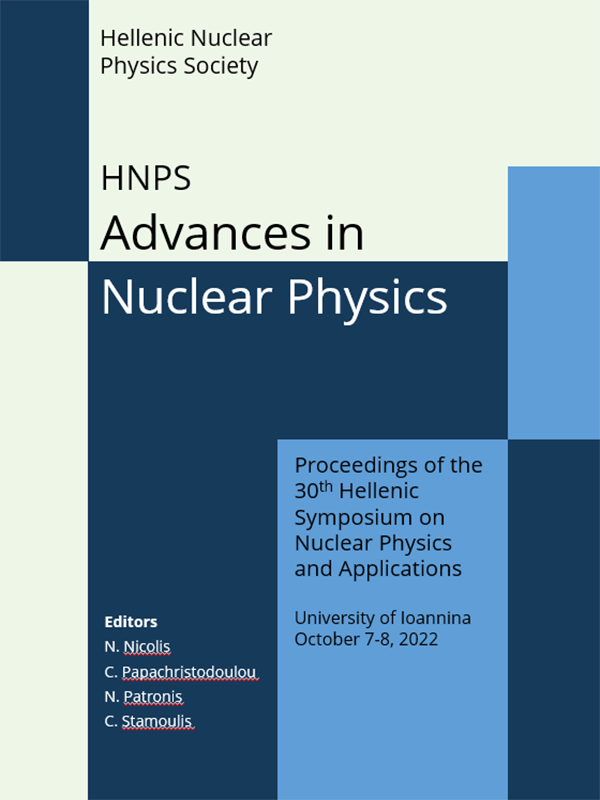Study of the cross section biasing technique using GEANT4 and determination of the parasitic neutrons at N.C.S.R. “Demokritos”
Περίληψη
A simulation code was developed using the GEANT4 [1] toolkit in order to determine the behavior of the neutron production beams generated by proton induced reactions while applying the cross section biasing technique [2]. As the application of the biasing technique can cause a change in the physical processes occurring during the simulation, the specific implemented technique was tested via control simulations to determine any deviations of the results from the theoretically expected ones. Different materials, geometries and biasing factors were used in order to qualify and quantify the discrepancies between the unbiased and the biased simulations.
One of the main reactions used for the production of the neutron beam at the Tandem accelerator laboratory of N.C.S.R. “Demokritos” [3] is the 3H(p,n)3He one. In the geometry of the main tritiated target, elements such as molybdenum, copper and titanium are included. During the interaction of the proton beam with them, it is possible to produce neutrons that will “contaminate” the main neutron beam. These neutrons are called parasitic and their quantification is necessary in order to avoid obtaining erroneous results in cross section measurements on the various targets under study.[4] By constructing the proper geometry and using the GEANT4 code mentioned above, the determination of the parasitic neutrons is achieved with optimal statistical results in short computational times, while the discrepancies between the unbiased and the biased results remain minimal.
Λεπτομέρειες άρθρου
- Πώς να δημιουργήσετε Αναφορές
-
Ziagkova, A., Michael Axiotis, Sotirios Chasapoglou, Maria Diakaki, Kalliopi Kaperoni, Michael Kokkiris, Anastasios Lagoyannis, Veatriki Michalopoulou, & Roza Vlastou. (2023). Study of the cross section biasing technique using GEANT4 and determination of the parasitic neutrons at N.C.S.R. “Demokritos”. Annual Symposium of the Hellenic Nuclear Physics Society, 29, 156–161. https://doi.org/10.12681/hnpsanp.5180
- Τεύχος
- Τόμ. 29 (2023): HNPS2022
- Ενότητα
- Poster contributions

Αυτή η εργασία είναι αδειοδοτημένη υπό το CC Αναφορά Δημιουργού – Μη Εμπορική Χρήση – Όχι Παράγωγα Έργα 4.0 4.0.






